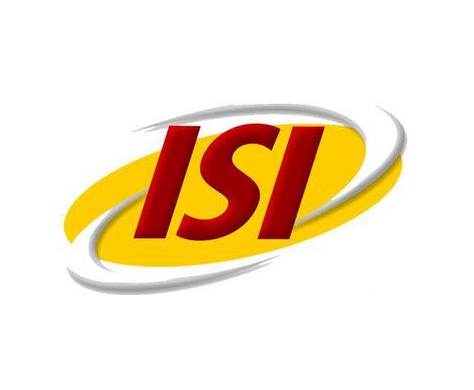دانلود رایگان مقاله لاتین عملکرد پروژه npd خودرو از سایت الزویر
عنوان فارسی مقاله:
همکاری انگیزشی، ظرفیت جذب دانش و عملکرد پروژه NPD در خودروهای چند ملیتی در تایلند
عنوان انگلیسی مقاله:
Motivation synergy, knowledge absorptive capacity and NPD project performance in multinational automobiles in Thailand
سال انتشار : 2016

برای دانلود رایگان مقاله عملکرد پروژه npd خودرو اینجا کلیک نمایید.
بخشی از مقاله انگلیسی:
3. Methods
This research explores the influence of motivation synergy (intrinsic and extrinsic) and the synergy of motivation and knowledge absorptive capacity (realized and potential) on NPD project performance (short and long run). Our survey was based on existing scales in the literature. Before the survey was administered, the survey was first prepared in English and then translated into Thai that double-blind back-translation process was used to check for meaning accuracy (Sinaiko & Brislin, 1973). Then, a pretest with 33 project team leaders was conducted to validate the measures in terms of their clarity and appropriateness to the context of MNC automobiles in Thailand. The reliabilities of all of the measures exceeded 0.70, which is the rule of thumb for Cronbach's alpha (Nunnally, 1978). 3.1. Sample and data collection procedures Our target organizations were 372 MNC automobiles in Thailand based on the list of Thailand Automotive Institute (2012). They compose of two main groups: 23 MNC automotive assemblers and 349 MNC automotive parts-and-accessories makers. Nearly every Japanese automobile has manufacturing facilities in Thailand, as do many major U.S. and German companies. In this study, a nature of project uses project-based operations to transfer knowhow from their headquarters and to undertake R&D for new products. We obtained a list of the 372 MNCs; however, the unit of analysis of this research is discrete projects. Project outcomes are new products that have been in the market for at least a year (Clark et al., 1987). Therefore, project leaders, who are considered to be the best source of information about the project, include plant managers, engineering managers, product managers, and R&D managers. However, it would be an unmanageable task to identify the number of completed projects in each of the 372 MNCs. As experts recommended, the number of projects that companies had implemented during the past five years averaged 10. Accordingly, we sent a packet, addressed to the plant manager, to 150 MNCs. The packets included ten copies of the survey and a personalized cover letter outlining the nature of the study and its confidential nature. Target respondents who had worked on different NPD projects were identified by the plant managers to fill in the questionnaires. Our survey resulted in 207 returned questionnaires, all carefully cross checked for accuracy with respect to the target companies and sample respondents. We discarded nine anonymous questionnaires that had more than 50% of their information incomplete (Hair, Bush, & Ortinau, 2006), resulting in a total of 198 usable questionnaires for analysis. Using this sample of 198 projects from 39 MNCs, the number of projects per MNC averaged five. The response rate for this survey was 13.2% (150 MNCs were each sent a packet of 10 questionnaires resulting in 198 usable questionnaires). For sample characteristics, 60% of the projects in our sample were projects that aimed at radical change or had a high complexity in developing a new product. The remaining 40% focused on incremental change. About 50% of the questionnaires indicated that the project duration was around one year, about 43% lasted between one and three years, and 7% of the sample respondents said that their project lasted for more than three years. Most projects were undertaken in Japanese-owned MNCs (71%), with 14% in German MNCs, 12% in US MNCs and 3% in UK MNCs. 3.2. Measures We used multi-item measurement scales derived from existing studies. Each item was rated on a Likert-type scale ranging from 1 (“strongly disagree”) to 7 (“strongly agree”). The item scales were validated using principal component factor analysis (PCFA) for a unidimensional construct. The Kaiser-Meyer-Olkin values of all of the measures exceeded the recommend value of 0.60 (Kaiser, 1974) and Barlett's Test of Sphericity was statistical significant at the 1% level (Barlett, 1954), which indicates that the data obtained for each construct are appropriate. Following this, Cronbach's alpha was used to assess the internal consistency of the measures. The rule of thumb for Cronbach's alpha is that the value should exceed 0.70 (Nunnally, 1978). As presented in Table 1, the Cronbach's alpha for all of the study variables was found to be above the acceptable level of 0.70.
برای دانلود رایگان مقاله عملکرد پروژه npd خودرو اینجا کلیک نمایید.
کلمات کلیدی:
Knowledge Management Model: The Role of Absorptive Capacity in ... https://www.researchgate.net/.../281576853_Knowledge_Management_Model_The_Rol... Official Full-Text Paper (PDF): Knowledge Management Model: The Role of Absorptive Capacity in Improving the New Product Development (NPD) Process. Absorptive Capacity and New Product Development (PDF Download ... https://www.researchgate.net/.../223456676_Absorptive_Capacity_and_New_Product_D... Keywords: Absorptive capacity; New product development .... Given that product development is an important, knowledge-intensive. commercial activity, we ... Absorptive capacity - Wikipedia https://en.wikipedia.org/wiki/Absorptive_capacity In business administration, absorptive capacity has been defined as "a firm's ability to recognize the value of new information, assimilate it, and apply it to commercial ends". It is studied on individual, group, firm, and national levels. Antecedents are prior-based knowledge (knowledge stocks and knowledge .... Fischer (2001), “Absorptive capacity and new product development”, Journal ... Absorptive Capacity and Source-Recipient Complementarity in ... onlinelibrary.wiley.com/doi/10.1111/j.1540-5885.2008.00315.x/abstract by C Abecassis‐Moedas - 2008 - Cited by 81 - Related articles Jul 28, 2008 - Absorptive Capacity and Source-Recipient Complementarity in Designing New ... on the knowledge absorption and the NPD performance. Influence of Market Orientation on Absorptive Capacity: On the Bright ... https://link.springer.com/chapter/10.1007/978-3-319-47331-4_74 by T Morgan - 2017 Apr 30, 2017 - Influence of Market Orientation on Absorptive Capacity: On the Bright and ... (NPD) efforts by bringing in required knowledge and resources. The Use of Absorptive Capacity in Improving the New Product ... iopscience.iop.org/article/10.1088/1742-6596/801/1/012092/pdf by W Gunawan - 2017 - Related articles The Use of Absorptive Capacity in Improving the New Product Development ( ... The term Absorptive Capacity (AC) refers to maximizing the external knowledge.
